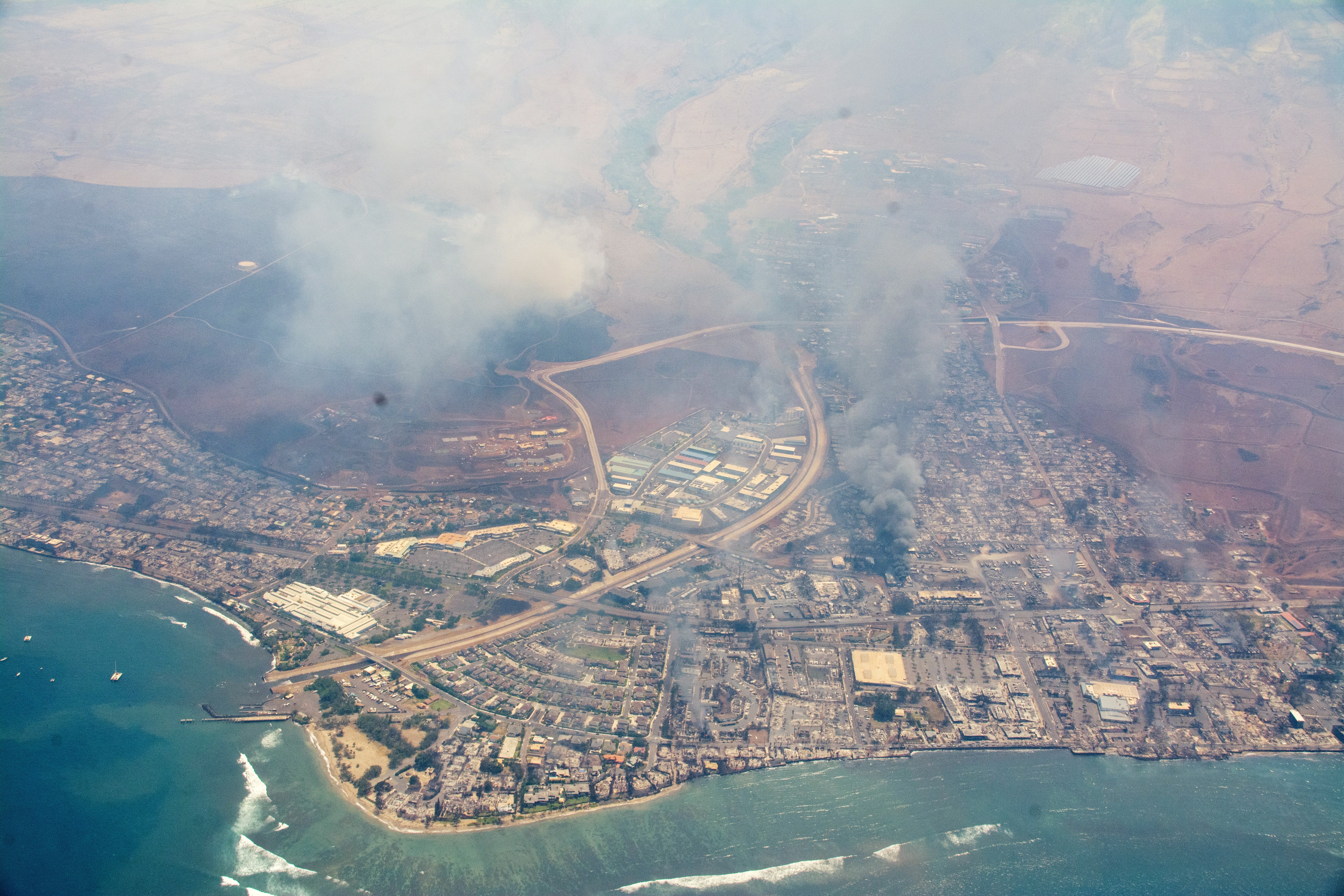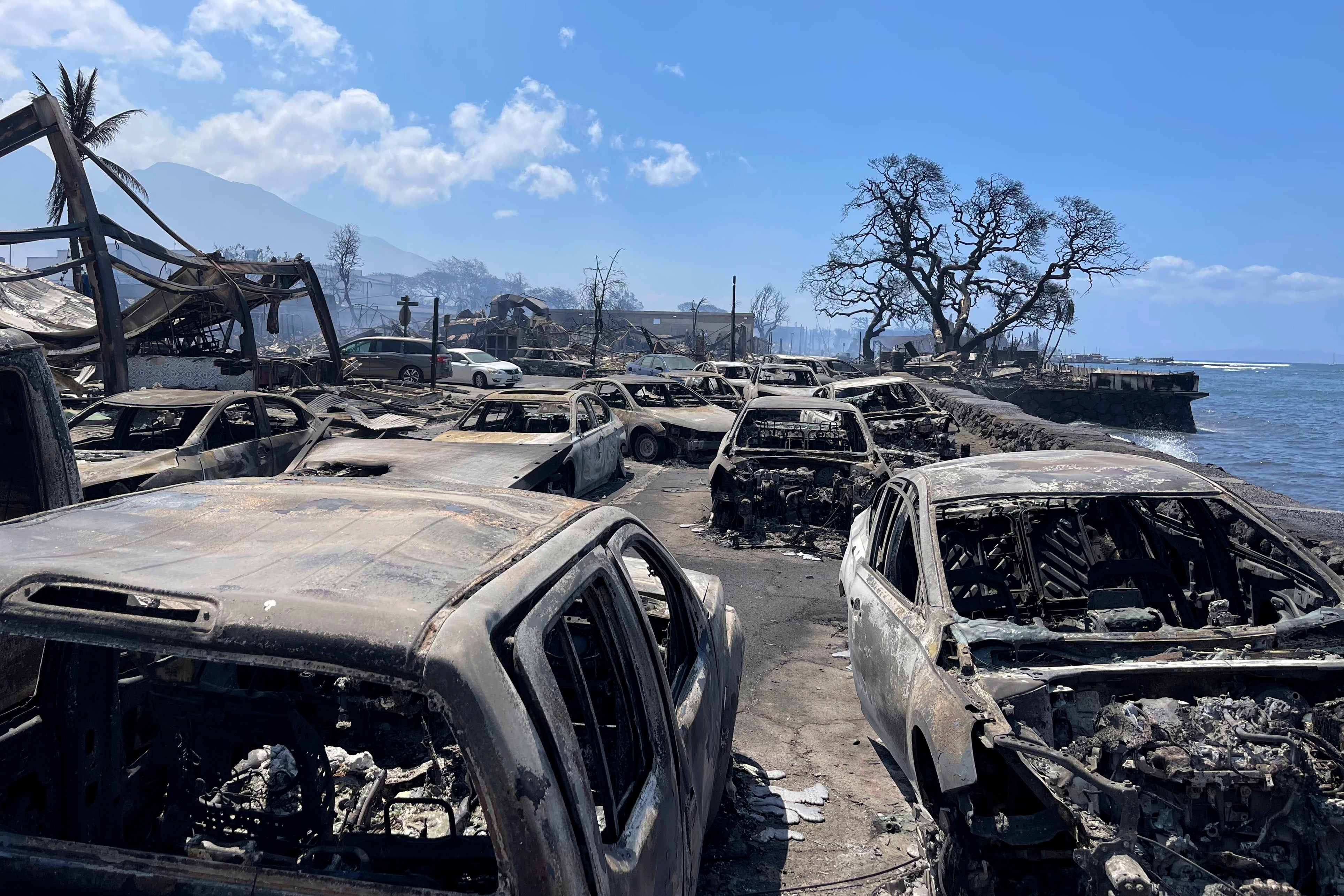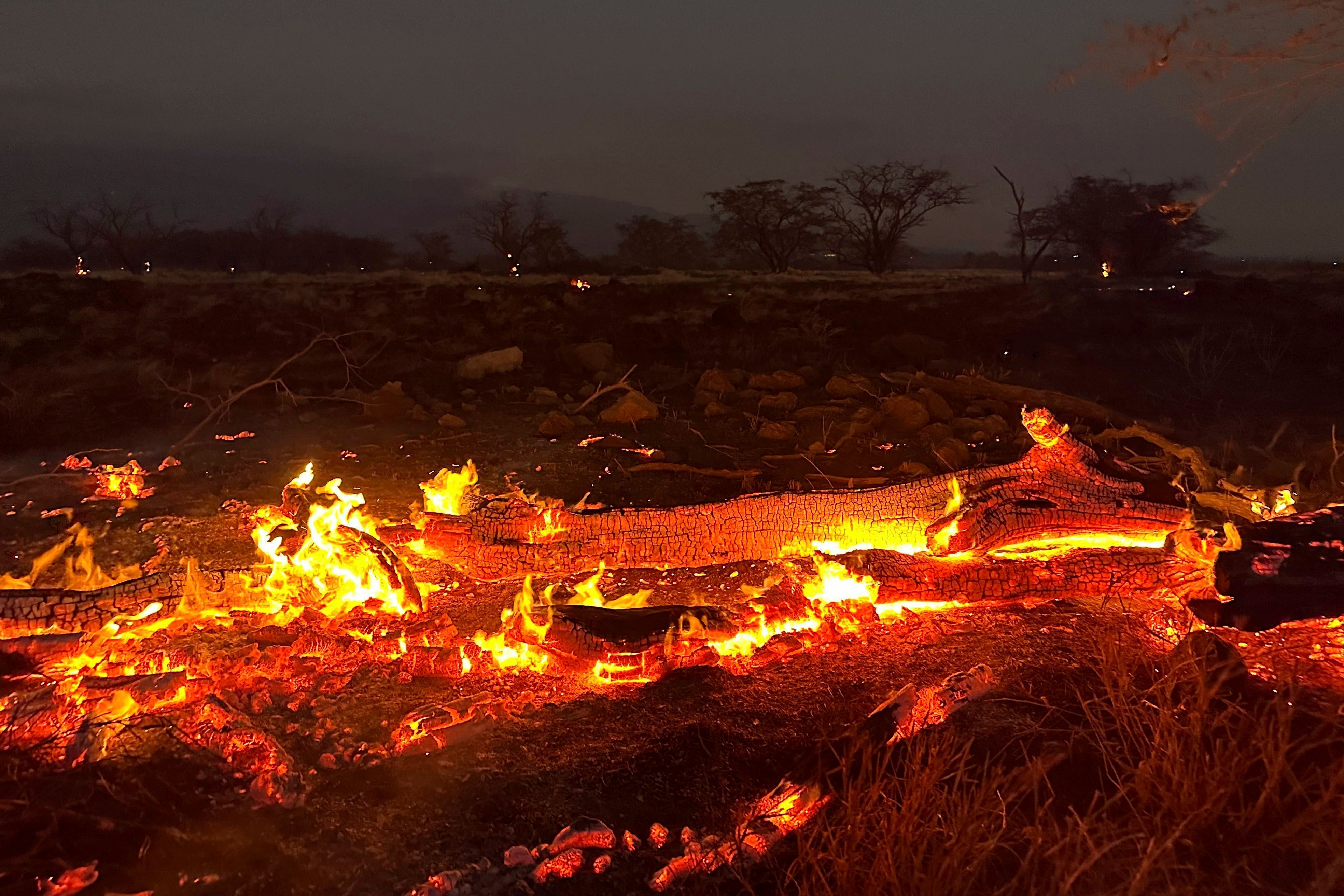Hawaii wildfires: A brief history of natural disasters blighting the tropical paradise
Climate crisis and agricultural neglect are blamed for the Pacific state’s increasing vulnerability to fires, which were until recently considered a rare occurrence on the islands
Your support helps us to tell the story
From reproductive rights to climate change to Big Tech, The Independent is on the ground when the story is developing. Whether it's investigating the financials of Elon Musk's pro-Trump PAC or producing our latest documentary, 'The A Word', which shines a light on the American women fighting for reproductive rights, we know how important it is to parse out the facts from the messaging.
At such a critical moment in US history, we need reporters on the ground. Your donation allows us to keep sending journalists to speak to both sides of the story.
The Independent is trusted by Americans across the entire political spectrum. And unlike many other quality news outlets, we choose not to lock Americans out of our reporting and analysis with paywalls. We believe quality journalism should be available to everyone, paid for by those who can afford it.
Your support makes all the difference.The blazes that have devastated Maui and the Big Island in Hawaii already constitute the state’s worst natural disaster since 1960 – as at least 111 people are confirmed dead, thousands of residents and tourists have been forced to evacuate and the picturesque and historic beach resort of Lahaina has been destroyed.
What’s more, the tragedy also already represents America’s second-deadliest wildfire outbreak of the last 100 years, with only the Camp Fire that struck California in 2018 surpassing the current Hawaiian death toll, which is still rising and could yet surpass it.
That brush fire five years ago killed 88 people and did $20.2bn-worth of damage.
This time round, it is too early to begin to calculate the cost of the destruction wrought across the Pacific island chain, as firefighters are still battling to bring the conflagration under control in areas like Wahiawa, but the latest crisis could ultimately beat that unwanted record too.
What makes the horror currently unfolding all the more disturbing is that wildfires were regarded as uncommon in Hawaii until relatively recently, with those that did break out usually attributed to eruptions from one of the archipelago’s six active volcanoes or to lightning strikes.
“On the other islands with less volcanic activity, fires did occur, but very, very rarely,” Professor David Beilman of the University of Hawaii told USA Today this week.
“This Maui situation is an Anthropocene phenomenon,” he said, referring to the epoch defined by humanity’s influence over the planet.
The tropical paradise, situated 2,000 miles west of the US mainland, has only really begun to experience the consequences of that influence in recent decades.
The last time Hawaii suffered a major burst of wildfires was in August 2018, when 70mph gusts of wind driven by Hurricane Lane shepherded flames towards Lahaina, the same town ravaged this month.
In that incident, 2,000 acres of land, 30 vehicles and 21 structures were ruined, according to local newspaper The Honolulu Star-Advertiser, with the fire racing across fields once dedicated to growing sugar cane but unharvested since 1999.

One local man told the paper at the time that he had seen “tornadoes of fire whirling up to the sky”.
“I’ve never seen something so devastating,” he added, aghast at the recollection.
Another resident recounted his own terror: “There was smoke everywhere and the fire was all around. We just literally got in the car and got out as quickly as we could.”
Before the 2018 wildfires, Hawaii was more commonly impacted by tsunamis hitting the islands.
In fact, the worst natural disaster in its history was the tsunami that struck on 1 April 1946.
Caused by an 8.4-magnitude earthquake off Alaska, the tsunami killed 165 people, wiping out the Hilo Bay waterfront on the Big Island and prompting the establishment of the Pacific Tsunami Warning Center in the state soon after.
More tsunamis followed in November 1952, August 1960 and March 1964.
The 35-foot wave of 1960 was particularly rough, crashing down again on Hilo Bay, killing 61, damaging more than 500 homes and businesses and doing $75m of damage.

Now, fires are becoming both more frequent and more extreme.
The Hawaii Wildfire Management Organisation (HWMO) now estimates that 0.5 per cent (or 20,000 acres) of the state’s land mass burns every year, which is at least equal to or greater than the proportion of every other state in the union
The HWMO reports that 98 per cent of those fires are instigated by humans, which compares unfavourably with the US Forest Service’s 85 per cent estimate for the nation as a whole.
While the carelessness of man is one factor behind the exacerbation, global warming is the other.
Climate change has increasingly been blamed for the erratic weather patterns the world has seen in recent years and this summer has provided further alarming illustrations of its adverse impact: western Canada and southern Europe have been devastated by spontaneous fires this year while the UK, by contrast, has been subjected to an uncannily rainy July and August.
In the case of the current Hawaii fires, 60mph winds from Hurricane Dora, lying hundreds of miles southwest of Honolulu, and a low pressure system sitting off western Japan are thought to have conspired to fan the flames and send them raging across Maui.
Another important factor in the state’s growing vulnerability of late has been its abundance of unmanaged dry vegetation providing the ideal fuel, much of which is accounted for by invasive species like Guinea grass that are non-native to Hawaii but have colonised areas of former farmland and forest.

“These savannas now cover about a million acres across the main Hawaiian Islands, mostly the legacy of land clearing for plantation agriculture and ranching in the late 1800s/early 1900s,” Professor Clay Trauernicht, also of the University of Hawaii, explained on X, formerly Twitter.
“The transformation to savanna makes the landscape way more sensitive to bad ‘fire weather’ – hot, dry, windy conditions. It also means we get huge buildups of fuels during rainy periods.
“Agriculture declines also mean less help for firefighters – less maintenance of roads, irrigation and water storage and even fewer people with knowledge of the land.”
Professor Trauernicht warned that this “benign neglect” has placed too great a burden on emergency responders to tackle the inevitable consequences, emphasising that prudent investment in “fuel reduction projects, agricultural land use, restoration and reforestation” could do a great deal to avert further tragedy.






Join our commenting forum
Join thought-provoking conversations, follow other Independent readers and see their replies
Comments